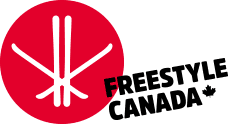Resource Center
Categories
Concussion Management

Freestyle Canada is dedicated to the long-term health and safety of our current and future athletes and has updated the Freestyle Canada Concussion Policy that conforms with the new Canadian Guidelines for Concussion in Sports developed by Parachute Canada and supported by the Public Health Agency of Canada and Sport Canada
Click Here for the Freestyle Canada Concussion Policy
You can access detailed information on the Concussion Policy by clicking a box to the right.
IMPORTANT NOTES:
All coaches and technical delegates must complete the Making Headway concussion education module prepared by the Coaching Association of Canada.
Any athlete who shows signs or symptoms of a suspected concussion must be removed immediately from competition or training and referred to a medical doctor for a diagnosis.
All athletes who have been identified to have a suspected concussion MUST have clearance by a medical doctor prior to returning to competition at any level.
